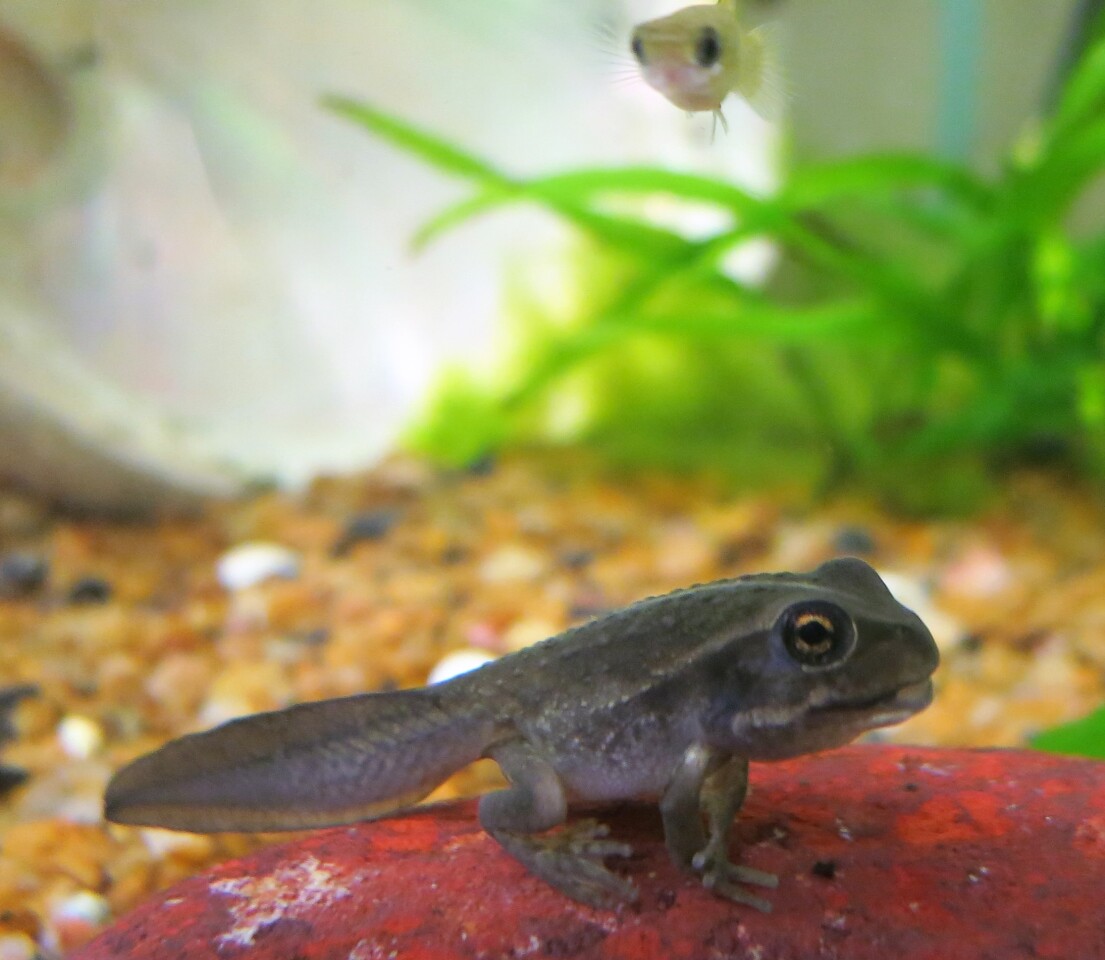The mosquitofish is a harmful invasive species in much of the world, outcompeting and overwhelming native fish and other aquatic life. Scientists are now working on a solution to the problem, in the form of a robotic bass.
In order to render native fish and tadpoles incapable of accessing foods such as insect larvae, mosquitofish will repeatedly nip away bits of their tails. Eventually, with no tails left, the animals are essentially unable to swim, leaving the larvae for the mosquitofish to consume.
Because they can’t feed, the native creatures end up starving to death. What’s more, mosquitofish place additional pressure on local populations of fishes and frogs by eating their eggs.
Unfortunately, approaches such as manually netting-out mosquitofish are just too time- and labor-intensive to be practical. Instead, a team of Australian, American and Italian scientists looked to one of the fish’s chief natural predators, the largemouth bass. Because introducing actual bass into lakes and ponds might upset the existing ecological balance, a robotic version was required.
In order to test their basic idea, the researchers built a lifelike rubber bass that was mounted on a transparent vertical shaft with a magnet at the bottom. It was placed in a water-filled tank, underneath which was another magnet that engaged the magnet on the robot through the bottom of the tank. Using stepper motors and a plotter-like apparatus to move the under-tank magnet back and forth, it was thus possible to drag the robot through the tank in those same directions.
Groups of six wild-caught mosquitofish and six wild-caught Australian motorbike frog (Litoria moorei) tadpoles were also placed in the tank for one-hour periods, with two overhead webcams monitoring their movements. Whenever any of the mosquitofish were observed approaching any of the tadpoles, the robot was activated to move over to the area and chase the mosquitofish away.

Giovanni Polverino
It was found that over the course of the five-week testing period, mosquitofish which were repeatedly chased by the robot became much more reluctant to approach the tadpoles than a control group which wasn’t chased. This effect persisted even when the robot was no longer present.
Additionally, the stressed-out, robot-chased fish exhibited weight loss, developed a skinnier body shape and experienced a reduction in fertility, all of which would negatively affect their survival as a species in the local environment.
Because the tadpoles had considerably poorer vision than the mosquitofish, they appeared not to be bothered by the movements of the robot. In fact, with the mosquitofish no longer bothering them, they tended to venture out further when foraging for food – thus increasing their chances of survival.
Of course, the current setup couldn’t be applied to natural bodies of water. That said, the data does support the notion that a self-propelled autonomous robotic bass – or some other mosquitofish-chasing technology – could make a big difference in such environments.
“Invasive species are a huge problem worldwide and are the second cause for the loss of biodiversity,” says the University of Western Australia’s Dr. Giovanni Polverino, first author of the study. “Hopefully, our approach of using robotics to reveal the weaknesses of an incredibly successful pest will open the door to improve our biocontrol practices and combat invasive species. We are very excited about this.”
A paper on the research, which also involved scientists from New York University and Italy’s University of Padova, was recently published in the journal iScience.
Source: Cell Press via EurekAlert
Source of Article